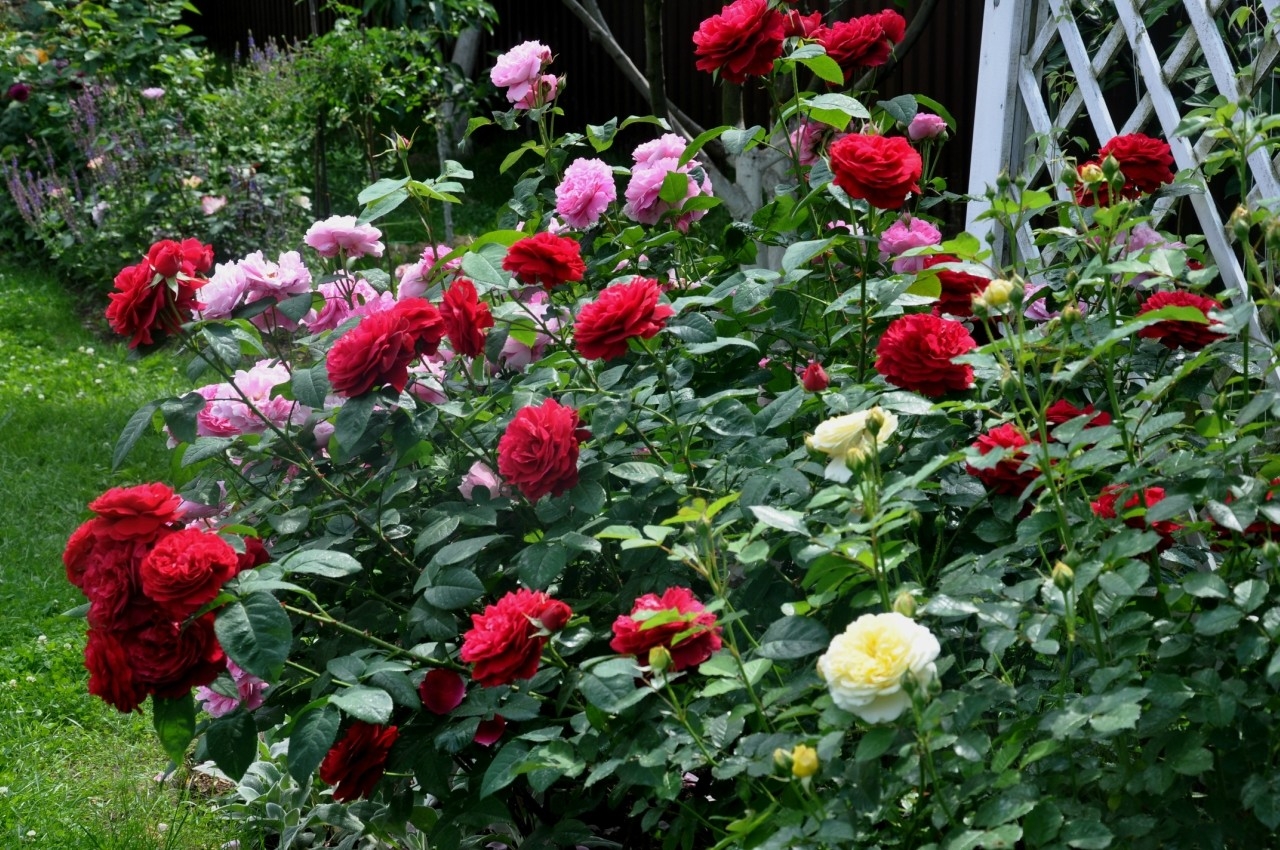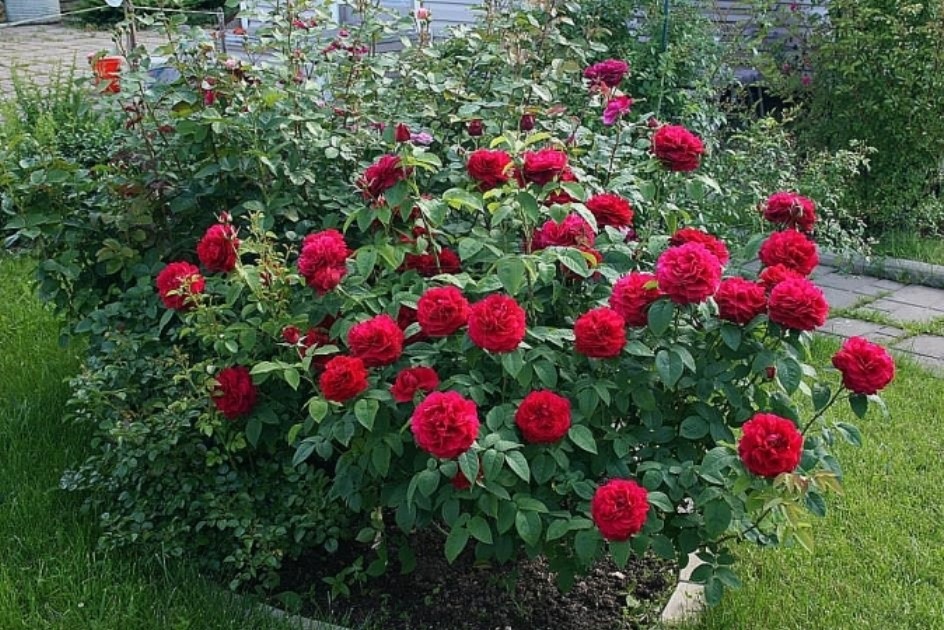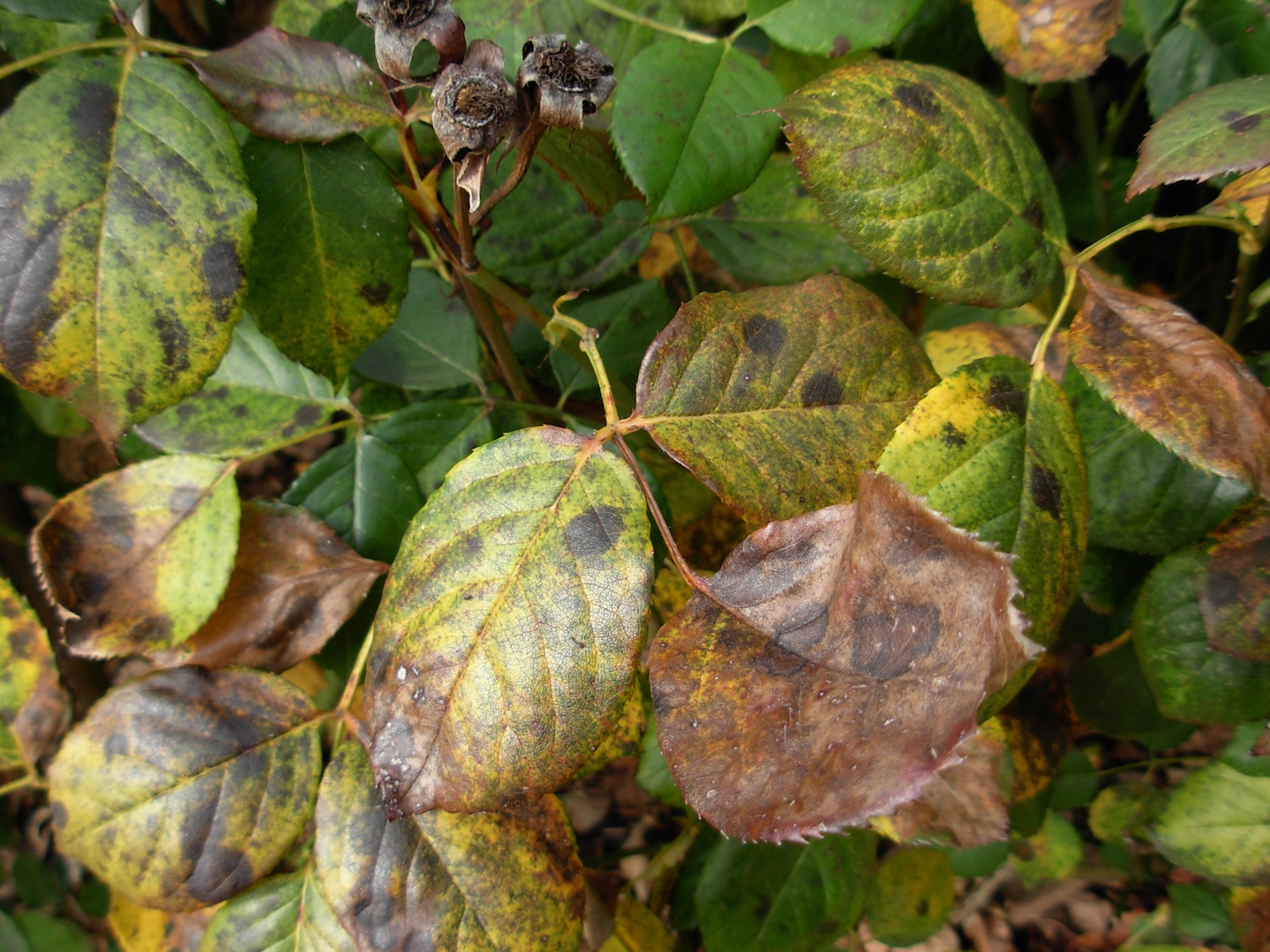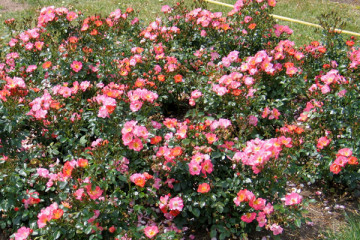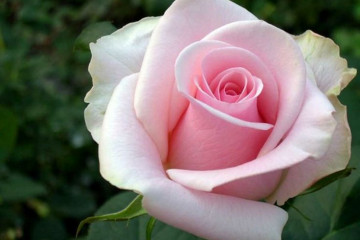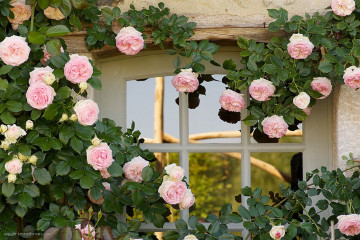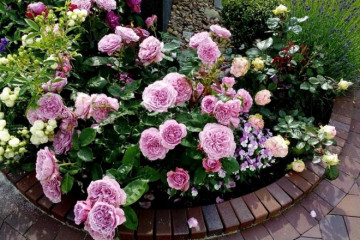Rose L D Braithwaite - characteristics of the bush
Content:
Rose Al Dee Braithwaite, or Brightwhite (LeonardDudley D Braithwaite) is a relatively new continuous flowering rose, bred in England. This variety is one of the most densely doubled among other spray roses. The bright red-burgundy color, strong aroma and lush flowers give the LD Brightwhite rose a special romantic charm.
History of creation and description of the variety
Rose Al Dee Brightwhite was created in 1998 by the famous English breeder D. Austin by crossing Mary Rose and The Squire. David CH Austin dreamed of creating a bush similar in shape and aroma to an old garden rose, but with repeated blooming.
This variety has won many world awards: certificates of ARS Kern County Rose Society Show and Ohio State Fair Show, USA, 1999; ARS certificates San Francisco, San Diego, California Rose Society Show, USA, 2000; RNRS award the Royal National Rose Society, UK, 2001; certificates Portland, Illinois, Milwaukee, Lewis Couty Rose Society Show, USA, 2001; title "Best Scrub" Olimpia Rose Society Show, USA, 2011
Rose L D Braithwaite will decorate any garden and will delight the owners with abundant flowering throughout the season and a pleasant aroma.
The rose bush is low, reaches a height of 100-120 cm, and is wide, up to 120 cm in diameter, dense, rounded. Shoots are erect, do not bend under lush flowers even in rains, with a lot of thorns. Large matte leaves grow a little rarely.
Flowers are formed throughout the season from June to October, new flowers immediately appear in very large numbers to replace those that fade. Long flowering. The shade of the rose is rich, almost cherry at the beginning, and when fully dissolved it is crimson-red, the brightest among English roses. Practically non-fading, maintaining the brightness and intensity of the color throughout the flowering period. Only in intense, prolonged heat can they change color to cherry pink at the end of flowering.
The flower is large, about 10 cm in diameter, resembles a peony in shape, very lush and wide open, has more than 80 petals. Resistant to rainy weather, retains its shape and color and continues to bloom without crumbling. The aroma is strong enough, D. Austin managed to keep the smell of old roses.
Average frost resistance, up to −21 ° C, so the Brightwhite rose needs a mandatory shelter.
Grows in full sun and partial shade. The ideal location is the background or center of the flower garden, which will hide the rare foliage, and the bright caps of flowers will royally hang over other plants.
Advantages and disadvantages of the variety
Rose Al De Braithwaite has advantages and disadvantages.
Brightwaite's benefits:
- high decorativeness. The variety blooms constantly and for a long time, which is very attractive to gardeners;
- pleasant strong aroma;
- resistance to frost and disease;
- unusual flower shape and the brightest color among other English roses;
- resistance to atmospheric precipitation. This variety is not afraid of rains and does not rot after prolonged downpours.
Among the disadvantages are the following:
- flowers are not ideal in shape, differ in size;
- three or more flowers can form on one shoot, which makes it unsuitable for cutting;
- this variety is prone to black spot;
- by autumn, the bush can release single powerful shoots, which makes it uneven;
- does not tolerate extreme heat, while it burns out and quickly crumbles;
- with repeated flowering, the flowers may become smaller, additional nutrition is necessary.
Use in landscape design
Rose L D Braithwaite is loved by many gardeners as it is versatile and used in any landscape design:
- for decorating garden paths;
- hedges;
- for single plantings, including flowerpots;
- to decorate flower beds in the French style (if only Braithwaite roses are planted on the flower bed);
- to create a variety of compositions and mixborders.
Growing a flower
You can grow a beautiful LD Brightwhite rose in your garden only by purchasing a high-quality seedling from the D. Austin nursery, which are sold in many floriculture companies. Only these roses on native rootstocks will take root well and will actively grow, not diseases, not freezing in winter and not letting out overgrowths.
When choosing a specimen, it is better to stay on a seedling with open roots, for better survival with a root collar of 8-10 cm, 2-3 green cuttings, smooth without cracks, flexible roots, white on cuts.
What time is the boarding
The optimal time for planting the L D Braithwaite rose, as for most other roses, is from mid-September to mid-October, when the sap flow slows down and the bush spends all its strength on rooting, but it is also possible in the spring, from mid-April to mid-May.
Seat selection
In one place, the L. D. Brightwhite bush can grow up to 10 years, so you need to carefully approach the choice of the landing site, taking into account all the nuances.
The variety was bred in the UK, where it is cloudy most of the summer, so it is better to choose a semi-shaded place for a flower. In the first half of the day no more than 4 hours the sun is allowed, and the rest of the time - diffused partial shade.
The English rose prefers to grow on a hill, but at the same time it does not tolerate wind, thawed spring waters and snow. The best place would be near a house or a shed, so that part of the roof protects the bush from snowfalls, and the building from the sun and wind.
How to prepare the soil and flower for planting
Before planting a rose L D Brightwhite, the roots of the seedling are cut and soaked in water for about a day. Substances that stimulate root growth can be added to the water. Immediately before planting, it is recommended to dip the rose in a clay mash (10 parts of water, 3 parts of clay and manure).
While the rose is soaking, the soil is prepared at the already selected planting site. To do this, you need to dig a hole 50 × 50 cm, 50 cm deep and pour a bucket of water into it. Mix the top layer of soil with humus, compost, sand and ash, you can add two small handfuls of superphosphate.
Planting procedure step by step
Step-by-step instruction:
- The seedling is lowered into the hole, straightening the roots. The border of the stock should be 7-10 cm below ground level so that wild growth does not grow.
- Sprinkle the soil and compact it with your hands so that there are no voids left.
- Then the ground in the hole is trampled underfoot and again filled with water.
- When the water is absorbed, the rose is spud to a height of 10 cm, which helps to retain moisture, and the bush will take root better.
With such a planting, over time (up to 18 months), the rose will move to its own roots.
Plant care
Rose L. D.Brightwhite, like other English varieties grown in foggy Albion, needs high humidity and does not tolerate high temperatures, so the rose requires special attention and care.
Watering rules and humidity
LD Brightwhite loves watering, but the soil should not be very soggy. Given the need for loose, oxygenated soil, the shrub should be watered only when the soil is dry, that is, every 4-5 days. One seedling requires 5 liters of water. Watering is necessary in the evening at the root. It is better to use settled or warm rainwater.
During extreme heat, the rosebuds may not open. The petals predisposed to moisture dry up, preventing the bud from opening. In this case, you need to help the flower and remove the upper petals. It is recommended to moisturize the leaves by giving the rose a warm shower in the evening.
Top dressing
The feeding scheme of L.D.Brightwhite is the same as for other roses.
- In early spring and before flowering, fertilize with nitrogen to activate the growth of the root system and fill it with forces for budding.
- In summer, during flowering, organic and mineral substances are added for additional nutrition of the bush.
- In the fall, the plant requires phosphorus and potassium to prepare for the cold winter.
If during the planting of the seedling all the necessary fertilizers were introduced into the pit, then nothing else can be added in the first year.
Pruning
Caring for a rose also includes pruning the shoots to form a beautiful and powerful bush. Pruning should only be done once a year, either in the spring or fall. The ideal time is April, while the buds have not yet blossomed. At the same time, dry, small, weak and diseased shoots are completely removed, leaving 4-5 branches, which also need to be cut. If you cut it in half, then the bush will turn out to be more compact, and the buds will be larger. Sections should be made at an angle at a distance of 5 mm from the kidney. When pruned by a third, you will get a large bush with a lot of buds.
Transfer
When you need to transplant a plant to another place, you can act boldly, the "move" variety L D Braithwaite will easily transfer, subject to a number of rules:
- the transplant is carried out in the cool season, optimally in September in the evening;
- you need to get the bush out of the soil very carefully, without damaging the root system. If the bush is not young with a developed root that goes too deep, it can be chopped off to 40-50 cm;
- the bush is transferred to a new place along with an earthen lump;
- the root collar is deepened, after which the soil is poured, tamped and watered abundantly.
Features of wintering a flower
Rose L D Braithwaite tolerates frosts down to -20 ° C and needs shelter for the winter. To do this, the bushes are spud with dry earth or sand in early October. The stems are tied and slightly bent to the ground. After the first frost, all leaves are removed from the bush and covered with frames. They can be taken ready-made or built from scrap materials: fittings, boards, pipes and dense film or agrofibre. There is a simpler way to hide roses: cover the roses with mulch to a height of 30 cm, cover with spruce branches, leaves or straw.
Blooming rose
L D Braithwaite blooms earlier than other roses, and by the end of June the first wave has already faded. The second wave blooms in July and lasts until October. The state of rest occurs at the first frost, when the sap flow stops.
Care during and after flowering
Brightwhite, like all roses, needs standard care: watering, combating weeds, diseases and pests, fertilizing, and shelter for the winter. Watering is required as the soil dries up. In spring and in rainy weather, the bushes should be sprayed with insecticides. Fertilizers are applied according to the scheme indicated above.
To prevent the flower from becoming sick with gray mold after rain, it is recommended to shake off the water from the buds. Withered inflorescences are cut off, which gives an impetus to the formation of new ones.
What to do if it does not bloom
It is necessary to eliminate the reason:
- from the root L D Braithwaite, wild growth can begin to grow. It delays flowering and needs mandatory felling;
- too heavy and dense soil. The introduction of organic fertilizers and regular loosening of the soil will help solve the problem;
- too much fertilizer. An excess of nutrients leads to the growth of greenery, which slows down the development of buds;
- rejuvenation. In the spring, shoots older than 4-5 years old, sick and broken, are subject to removal. Grown young shoots will delight you with lush flowering;
- improper wintering. The structure of the L D Braithwaite shoot is loose with a lot of moisture, so the flower requires special attention when preparing for winter;
- too deep planting pushes the plant to build up the root system, which inhibits the development of the upper part of the bush.
Flower propagation
Reproduction of the English rose L.D.Brightwhite is possible in several ways.
- Propagation by cuttings. A 20 cm long stalk is cut from a ripe shoot, one leaf is left and planted in the ground. From above it is covered with a jar, carefully covered for the winter. They dive only after a year.
- Reproduction by layering. The easiest method. At the bottom of the bush, you need to choose a shoot, cut it and pin it to the soil. Sprinkle with fertilized soil on top, water regularly. When the cuttings take root, cut it off from the mother bush and transplant.
- Reproduction by grafting is considered the most effective. Rose Loxa stock is grown, L. D. Brightwhite shoots with buds are selected and one is cut off. An incision is made on the root collar, to which the cut kidney is applied, and fixed with a film.
Diseases, pests and ways to control them
The most terrible enemy of the English rose is the spider mite, which feeds on the juice of its leaves. You can guess it by the bloom on the lower plates of the leaves, a light cobweb.
Rose variety L. D. Brightwhite will be a decoration of any garden. She is not demanding in care, but throughout the summer she will delight with beautiful flowers and a magnificent aroma.

